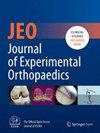Coronal Plane Alignment of the Knee (CPAK) distribution in a diverse Asian population: Influence of ethnicity, sex and bilaterality
Abstract
Purpose
In total knee arthroplasty (TKA), it remains unclear which patients benefit from correction versus restoration of native knee alignment. The Coronal Plane Alignment of the Knee (CPAK) classification system was introduced in 2021 to describe native alignment, helping to characterise the effect of different TKA alignment techniques. This study aims to describe CPAK in an ethnically diverse population and characterise the relationship between CPAK and ethnicity, as well as the bilaterality of osteoarthritis and other patient factors.
Methods
503 primary TKAs were performed in a large tertiary institution in Singapore from 2014 to 2021. Pre-operative anteroposterior knee radiographs were collected for 441 procedures—all had ethnicity, age, sex and body mass index data. The medial proximal tibial angle (MPTA) and lateral distal femoral angle (LDFA) were measured with good inter-observer correlation. Knees were then classified into nine CPAK categories based on arithmetic hip–knee–ankle (aHKA) angle and joint line obliquity (JLO).
Results
77% of the cohort were apex-distal (CPAK 1, 2 and 3), and 59% were varus (CPAK 1, 4 and 7); 44% were CPAK 1 (varus + apex-distal). Chinese and Indian knees followed near-identical patterns: CPAK 1 (46%) > CPAK 2 (20%) > CPAK 4 (15%). Malay knees had significantly fewer CPAK 1 (p = 0.0183), with CPAK 1 (29%) ≈ CPAK 2 (29%) ≈ CPAK 4 (21%). Thirty-eight patients had bilateral TKA. Identical categories were recorded bilaterally in 45% of CPAK, 67% of JLO and 70% of aHKA. Bilateral TKA were more likely when knees were in valgus alignment than unilateral TKA (p = 0.00457).
Conclusion
Malay knees are less likely to be CPAK-1; this novel finding may explain ethnic differences in TKA outcomes described in the literature. Less than half of the bilateral knees had the same CPAK category bilaterally. The implications of this bilateral CPAK incongruence are unclear and require further study.
Level of Evidence
Level II, prospective cohort study.


 求助内容:
求助内容: 应助结果提醒方式:
应助结果提醒方式:


